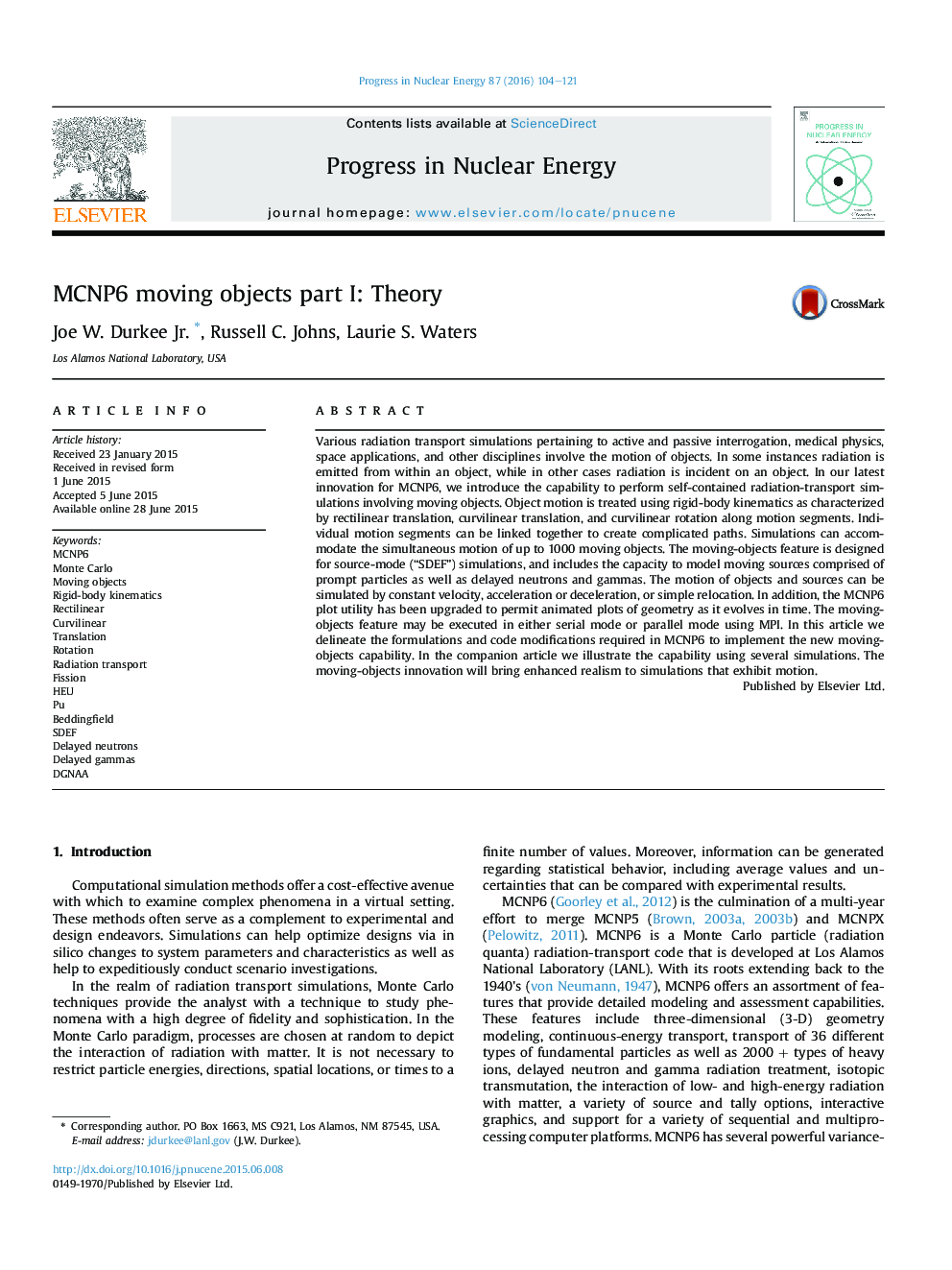| کد مقاله | کد نشریه | سال انتشار | مقاله انگلیسی | نسخه تمام متن |
|---|---|---|---|---|
| 8085045 | 1521751 | 2016 | 18 صفحه PDF | دانلود رایگان |
عنوان انگلیسی مقاله ISI
MCNP6 moving objects part I: Theory
دانلود مقاله + سفارش ترجمه
دانلود مقاله ISI انگلیسی
رایگان برای ایرانیان
کلمات کلیدی
موضوعات مرتبط
مهندسی و علوم پایه
مهندسی انرژی
مهندسی انرژی و فناوری های برق
پیش نمایش صفحه اول مقاله

چکیده انگلیسی
Various radiation transport simulations pertaining to active and passive interrogation, medical physics, space applications, and other disciplines involve the motion of objects. In some instances radiation is emitted from within an object, while in other cases radiation is incident on an object. In our latest innovation for MCNP6, we introduce the capability to perform self-contained radiation-transport simulations involving moving objects. Object motion is treated using rigid-body kinematics as characterized by rectilinear translation, curvilinear translation, and curvilinear rotation along motion segments. Individual motion segments can be linked together to create complicated paths. Simulations can accommodate the simultaneous motion of up to 1000 moving objects. The moving-objects feature is designed for source-mode (“SDEF”) simulations, and includes the capacity to model moving sources comprised of prompt particles as well as delayed neutrons and gammas. The motion of objects and sources can be simulated by constant velocity, acceleration or deceleration, or simple relocation. In addition, the MCNP6 plot utility has been upgraded to permit animated plots of geometry as it evolves in time. The moving-objects feature may be executed in either serial mode or parallel mode using MPI. In this article we delineate the formulations and code modifications required in MCNP6 to implement the new moving-objects capability. In the companion article we illustrate the capability using several simulations. The moving-objects innovation will bring enhanced realism to simulations that exhibit motion.
ناشر
Database: Elsevier - ScienceDirect (ساینس دایرکت)
Journal: Progress in Nuclear Energy - Volume 87, March 2016, Pages 104-121
Journal: Progress in Nuclear Energy - Volume 87, March 2016, Pages 104-121
نویسندگان
Joe W. Jr., Russell C. Johns, Laurie S. Waters,